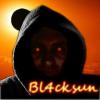
Posted
The new ducking feature is a great addition. I still do not understand it fully.
Here’s an example where I get counterintuitive results.
2 Tracks on same bass sound.
First: ordinary loop, as default for bars 1-4.
Second: intended as fill/ending of the 4bars, overriding the loop of first track with a different figure.
The second figure is enabled in property inspector with ducking.
As expected first parts of the first track on bar 4 are ducked as expected.
Whats is counterintuitive, that the last eight note of first track sneaks in on bar 4 although the figure from second track spans into end of bar 4.
I would expect that ducking applies to whole span of a figure and not only to note attack.
Can someone explain?
Mon, 2024-11-11 - 13:16 Permalink
Yes, note onsets currently determine the muted span (incl. last onset plus 1/64 tolerance margin).
Some issues arise when note lengths are included. They often reflect variations in playing style rather than a pattern grid (e.g. piano, guitar). You don't want to drop rhythmically important notes just because the player held a string a few milliseconds longer.
It's not yet clear how to solve this. Maybe two modes of Ducking with or without lengths, although I am reluctant to adding even more settings.
Mon, 2024-11-11 - 15:04 Permalink
Thx Andre for the explanation and insights on design choices (onset vs length), which in this case I understand is use-case dependent
I personally see at least more case in favour of prioritizing on length (have control that no extra notes sneak in) as ducking-choice in comparison to onset: the many occasions for: Drum Fills and bass line variation at end of phrase/loop.
But this may be related to music style preferences.
Mon, 2024-11-11 - 15:39 Permalink
It's complicated. You don't want a cymbal in a break to mute the bass drum of the next bar, for example.
When I think of it, Monophonic or not might be a useful clue. Mono = incl. lengths, poly = based on onsets. This needs more thought.
Mon, 2024-11-11 - 17:32 Permalink
using note length is so dependent on the actual instrument sound. A short plucky sound played with a long midi note will leave a big silence if the midi is used to duck the other instruments. In a daw you can use the audio to duck another instrument, but I presume synfire is using the figure data/midi?
Mon, 2024-11-11 - 18:06 Permalink
Yes Synfire uses symbolic data for ducking. Ducking is basically a way to edit a Figure non-destructively by placing another one next to it. Phrase factories also use ducking to pause a melody while a chord is playing (it's different but very similar).


